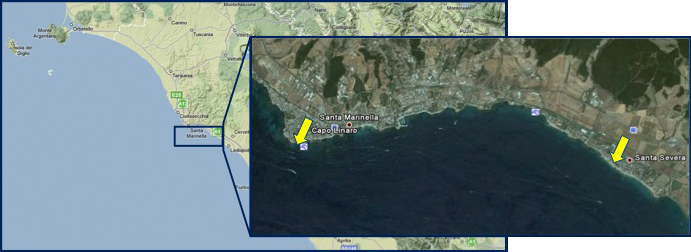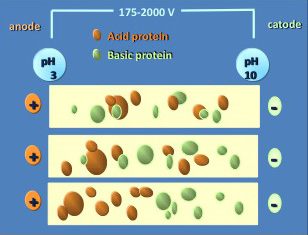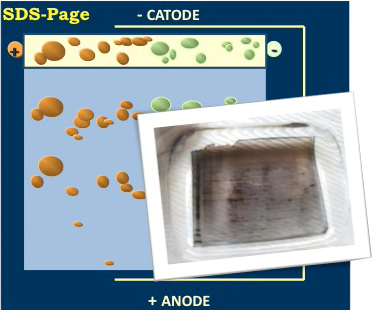Biochemical descriptors for Posidonia oceanica and other seagrasses
Marine phanerogams are one of the most productive marine systems and play a crucial role in the dynamics and maintenance of coastal ecosystems (water oxygenation, food and shelter for various interventions, reduction of hydrodynamism and therefore of coastal erosion). Angiosperms Monocotyledons producing fruits and seeds, they are descendants of terrestrial plants which colonized the marine environment about 100 million years ago. Present in all continents, but Antarctica, they include 72 species, some of them are endangered species, such as Posidonia oceanica, others are spreading colonizers, such as Halophila stipulacea, an invasive species.
They form large submarine meadows playing a pivotal role in the dynamics and maintenance of coastal marine ecosystems (water oxygenation, food and shelter for various environments, reduction of hydrodynamism and therefore of coastal erosion).
Posidonia oceanica is a key species, listed in the Habitat Directive 92/43/EEC; it is a recognized bioindicator of coastal marine water quality, according to the Water Framework Directive (WFD 2000/60 / EU). Unfortunately, the increasing impact of human activities in the coastal areas is responsible for a widespread regression of this species; Posidonia meadows seem vulnerable to changes in hydrological regime and sediment transport, pollution/eutrophication (eg. intensive aquaculture) and mechanical damage (eg. mooring) but also to climate change.
Halophila stipulacea is a small tropical seagrass species. It is the dominant seagrass species in the Gulf of Aqaba (GoA; northern Red Sea), where it grows in both shallow and deep environments. Native to the Indian Ocean, Persian Gulf, and Red Sea, this species is a Lessepsian migrant established the Mediterranean but has recently invaded the Caribbean Sea, displacing the native species. Due to its invasive nature, there is growing interest to understand this species’ capacity to adapt to new conditions, which might be attributed to its ability to thrive in a broad range of ecological niches.
The study of these (and other) phanerogams is therefore based on the development, choice and combination of sensitive and measurable descriptors, an essential approach for meadows monitoring. The most common popular indicators give indications at individual, population or community level; however, many of them have low sensitivity and it is often necessary to combine/integrate multiple indicators to get meaningful information.
The identification of new indicators able to give ecologically relevant information in a short time is therefore a crucial problem. In 2004 a new descriptor was identified: the synthesis of phenolic compounds, an easy and cheap biochemical descriptor. Phenolic compounds are a class of secondary metabolites widely distributed in terrestrial and aquatic plants, and the concentration of total phenols was already considered a biochemical marker of environmental stress in terrestrial plants. High concentrations of phenolic compounds have been detected in Posidonia plants exposed to different environmental pressures: competition with the invasive algae Caulerpa taxifolia, response to metal contamination, proximity to intensive aquaculture facilities. The determination of total phenols has been also associated with two-dimensional electrophoretic analysis of proteins, to identify expression changes in plants exposed or not to environmental stress, a way to identify new putative markers of plant stress conditions.
In addition to the role of indicator, total phenol concentrations in marine phanerogams can modify the herbivore pressure on the plants. The role of total phenols (and its variation according to environmental conditions) was studied on the grazing rate of the mollusc, Smaragdia souverbiana, which feeds on two species of phanerogams, Zostera muelleri and Halophila ovalis, which live synthopically in different sites and environmental conditions of the Australian east coast. The connection between phenol concentration and herbivore pressure showed how herbivores may regulate top-down the dynamic of the seagrass.
Moreover recently, along with the quantification of phenolic compounds in rhizomes, other descriptors were proposed: photosynthetic pigments, markers of oxidative stress and measures of genetic diversity, were successfully used as biomarkers of environment quality. All these markers can be evaluated on a single shoot/leaf; this allows (i) a more accurate evaluation of the conservation status of the plant, (ii) the reduction of the impact of sampling and, last but not least, (iii) a reduction of the costs of the monitoring sampling campaigns. Two of these biochemical markers (phenolic compounds and photosynthetic pigments) have been successfully applied in other marine phanerogams such as Cymodocea nodosa, Zostera noltii and Halophila stipulacea collected from different sites and different environmental conditions (C. nodosa and Z. noltii, Ria formosa lagoon, Faro, Portugal; H. stipulacea, Gulf of Aqaba, Eilat, Israel, and Limassol, Cyprus).
This research line has developed thanks to numerous collaborations, listed here in order of time, from the first to the most recent: Agata Giallongo, Maria Di Bernardo and Letizia Anello from CNR - IBIM (Institute of Biomedicine and Molecular Immunology) "Alberto Monroy" in Palermo; Andrea Peirano and Carla Micheli from ENEA (National Agency for new technologies, energy and economic development; Centro Ricerche Santa Teresa-La Spezia, e Centro Ricerche Casaccia-Roma, respectively); Isabel Barrote e João Silva dell'Università dell'Algarve/CCMAR di Faro (Portogallo); Gidon Winters del Dead Sea & Arava Science Center, Hazeva (Israele); Ian R. Tibbets and Renee A. Rossini of the School of Biological Sciences of the University of Queensland in Brisbane (Australia), where we worked thanks to an Erasmus Mundus mobility grant of the NESSIE Program; Marlene Vasquez from the Cyprus University of Technology in Limassol.
Pansini A., Stipcich P., Frasca S., Migliore L., Ceccherelli G. (2025). DIFFERENT THERMAL REGIMES AND SUSCEPTIBILITY TO HERBIVORY DO NOT CONSTRAIN SEAGRASS SEEDLING RESTORATION. Marine Environmental Research, 204, 106918. DOI: https://doi.org/10.1016/j.marenvres.2024.106918
Recovering seagrass ecosystems through restoration has become impellent to re-establish their functionality and services. Although the use of seedlings may represent an appropriate solution, little information is provided on the seedling-based restoration effectiveness with influence of biotic and abiotic interactions. Survival, morphological development and leaf total phenol content of transplanted Posidonia oceanica seedlings were evaluated under different origin, thermal regimes and herbivore pressure through a five-months field experiment in two MPAs, located on the west (cold) and east (warm) Sardinia coast to explore the effectiveness of seedling-based restoration. Seedlings originated from the two coasts responded differently to thermal regime site and herbivory pressure, as the warm-adapted ones survived less but developed more (and vice-versa) and resisted to the herbivory pressure increasing their phenol content, thus showing compensating responses. This study provided information on the P. oceanica seedling-based restoration by investigating abiotic and biotic interactions with the transplanted plants. It promotes the collection of beach-cast fruits from different coasts and their transplantation, regardless their origin, with no need of protecting seedlings from predators.
Winters G., Beer S., Willette D.A., Viana I., Chiquillo K.L., Beca-Carretero P., Villamayor B.B., Azcárate-García T., Shem-Tov R., Mwabvu B., Migliore L., Rotini A., Oscar M.A., Belmaker J., Gamlie I., Alexandre A., Engelen A.H., Procaccini G. and Rilov G. (2020). THE TROPICAL SEAGRASS HALOPHILA STIPULACEA: REVIEWING WHAT WE KNOW FROM ITS NATIVE AND INVASIVE HABITATS, ALONGSIDE IDENTIFYING KNOWLEDGE GAPS. Frontiers in Marine Science 7:300. DOI: 10.3389/fmars.2020.00300
Halophila stipulacea is a small tropical seagrass, native to the Red Sea, Persian Gulf, and the Indian Ocean. It invaded the Mediterranean Sea 150 years ago as a Lessepsian migrant, but so far has remained in insulated, small populations across this basin. Surprisingly, in 2002 it was reported in the Caribbean Sea, where within less than two decades it spread to most of the Caribbean Island nations and reaching the South American continent. Unlike its invasion of Mediterranean, in the Caribbean H. stipulacea creates large, continuous populations in many areas. Reports from the Caribbean demonstrated the invasiveness of H. stipulacea by showing that it displaces local Caribbean seagrass species. The motivation for this review comes from the necessity to unify the existing knowledge on several aspects of this species in its native and invasive habitats, identify knowledge gaps and develop a critical strategy to understand its invasive capacity and implement an effective monitoring and conservation plan to mitigate its potential spread outside its native ranges. We systematically reviewed 164 studies related to H. stipulacea to create the “Halophila stipulacea database.” This allowed us to evaluate the current biological, ecological, physiological, biochemical, and molecular knowledge of H. stipulacea in its native and invasive ranges. Here we (i) discuss the possible environmental conditions and plant mechanisms involved in its invasiveness, (ii) assess the impact of H. stipulacea on native seagrasses and ecosystem functions in the invaded regions, (iii) predict the ability of this species to invade European and transoceanic coastal waters, (iv) identify knowledge gaps that should be addressed to better understand the biology and ecology of this species both in its native and non-native habitats, which would improve our ability to predict H. stipulacea’s potential to expand into new areas in the future. Considering the predicted climate change scenarios and exponential human pressures on coastal areas, we stress the need for coordinated global monitoring and mapping efforts that will record changes in H. stipulacea and its associated communities over time, across its native, invasive and prospective distributional ranges. This will require the involvement of biologists, ecologists, economists, modelers, managers, and local stakeholders.
Beca-Carretero P., Rotini A., Mejia A.Y., Migliore L., Vizzini S., Winters G. (2019). HALOPHILA STIPULACEA DESCRIPTORS IN THE NATIVE AREA (RED SEA): A BASELINE FOR FUTURE COMPARISONS WITH NATIVE AND NON-NATIVE POPULATIONS. Marine Environmental Research, 153:104828. DOI: 0.1016/j.marenvres.2019.104828
Halophila stipulacea is a small tropical seagrass species native to the Red Sea. Due to its invasive character, there is growing interest in understanding its ability to thrive in a broad range of ecological niches. We studied temporal (February 2014 and July 2014), depth (5, 9, 18 m) and spatial (NB and SB) related dynamics of H. stipulacea meadows in the northern Gulf of Aqaba. We evaluated changes in density, morphometry, biomass, and biochemical parameters alongside the reproductive effort. In both sites, maximal growth and vegetative performance occurred in the summer with a marked increase of 35% in shoot density and 18% in biomass; PAR reduction with season and depth induced a significant increase of 28% in leaf area. Sexual reproduction efforts were only observed in July, and the density of plants carrying male or female flowers decreased significantly with depth. The favorable growth responses of H. stipulacea plants observed in the N-enriched NB site suggests their capacity to acclimate to human-disturbed nearshore environments
Rotini A., Tibbetts I.R., Migliore L., Rossini R.A. (2018) - THE TRADE-OFF BETWEEN DIGESTIBILITY AND PHENOL CONTENT INFLUENCES THE FOOD CHOICE OF THE OBLIGATE SEAGRASS-FEEDING NERITID SNAIL SMARAGDIA SOUVERBIANA. Journal of Molluscan Studies, 84(1): 12-18. DOI: 10.1093/mollus/eyx038
 Grazing influences the structure and function of seagrass meadows. Like terrestrial plants, seagrasses have evolved nutritional, structural and chemical mechanisms to either tolerate or resist grazing. Phenols are common secondary metabolites that have multiple roles, including grazing deterrence, and their content in seagrass tissues can vary both among species and within a single species in response to biotic and abiotic processes. Such variability influences the grazing behaviour of species that consume seagrass, but few studies have addressed mesograzers that consume or damage seagrass, such as the nerite Smaragdia souverbiana. We assessed the effect of environmentally-mediated differences in phenol concentration on these seagrass mesograzers by testing: (1) if phenol content is different between sites and seagrass species (Zostera muelleri vs Halophila ovalis) and (2) if S. souverbiana inflicts different amounts of damage on different seagrasses from different sites, according to their phenol content. Phenol content was consistently lower in Z. muelleri than H. ovalis, and concentrations were about 60% lower in both species at one of two sites in eastern Moreton Bay, Queensland. These differences corresponded to different foraging patterns of S. souverbiana, with the snails generally choosing the seagrass species with the lowest phenol content. These results suggest that S. souverbiana chooses among locally available seagrasses based on a trade-off between phenol content and digestibility (related to cell size). This work demonstrates how subtle local processes can create complex changes in seagrass–grazer interactions with potential ecological consequences at local and regional scales.
Grazing influences the structure and function of seagrass meadows. Like terrestrial plants, seagrasses have evolved nutritional, structural and chemical mechanisms to either tolerate or resist grazing. Phenols are common secondary metabolites that have multiple roles, including grazing deterrence, and their content in seagrass tissues can vary both among species and within a single species in response to biotic and abiotic processes. Such variability influences the grazing behaviour of species that consume seagrass, but few studies have addressed mesograzers that consume or damage seagrass, such as the nerite Smaragdia souverbiana. We assessed the effect of environmentally-mediated differences in phenol concentration on these seagrass mesograzers by testing: (1) if phenol content is different between sites and seagrass species (Zostera muelleri vs Halophila ovalis) and (2) if S. souverbiana inflicts different amounts of damage on different seagrasses from different sites, according to their phenol content. Phenol content was consistently lower in Z. muelleri than H. ovalis, and concentrations were about 60% lower in both species at one of two sites in eastern Moreton Bay, Queensland. These differences corresponded to different foraging patterns of S. souverbiana, with the snails generally choosing the seagrass species with the lowest phenol content. These results suggest that S. souverbiana chooses among locally available seagrasses based on a trade-off between phenol content and digestibility (related to cell size). This work demonstrates how subtle local processes can create complex changes in seagrass–grazer interactions with potential ecological consequences at local and regional scales.

 |
 |

